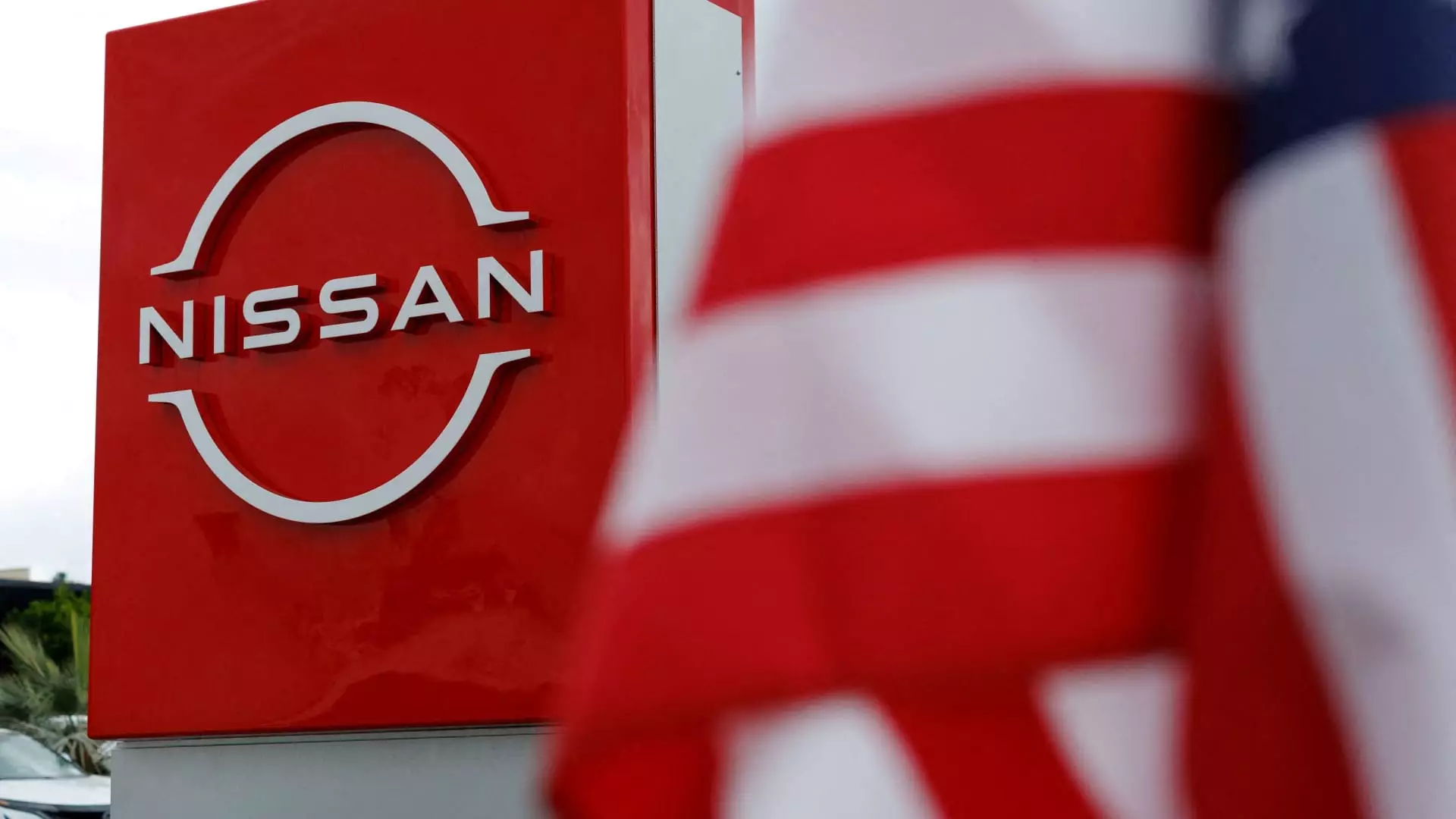Nissan, one of the major players in the automotive industry, is currently steering through turbulent waters compounded by President Donald Trump’s aggressive tariff policies. The newly apppointed leader of Nissan Americas, Christian Meunier, is vocal about the automaker’s goal to “max out” production in their Smyrna, Tennessee plant, which happens to be their largest facility in the United States. This ambition doesn’t merely hinge on economic strategy but is a lifeline aimed at revitalizing Nissan’s beleaguered U.S. operations.
The ramifications of the 25% tariffs thrust upon the automotive sector catalyze a fundamental shift in how Nissan operates. It reveals a much-needed urgency within the company to embrace domestic production. Such a proactive approach signifies a broader recognition that relying on international supply chains is becoming increasingly risky. The acknowledgment of such challenges is crucial for any organization aiming to thrive amid tumultuous economic conditions.
Maximizing Potential in Tennessee
With a staggering 6-million-square-foot facility, the Smyrna plant is currently underperforming in terms of its production capabilities, having produced only 314,500 vehicles last year. Meunier’s determination to “max out” capacity speaks volumes about the untapped potential lurking within these walls. The potential for upgrading the facility to full production means not just enhancing operational capacity, but also revitalizing the workforce that once considered Smyrna a beacon of manufacturing excellence.
Nissan’s ambition is not just about increasing the numbers; it’s about reinstating its local promise. Bringing more production back to the U.S. would cut down costs and improve margins, which makes me wonder if this is a bold strategy or merely a desperate measure to stave off economic decline. Indeed, the endeavor calls for more flexibility and responsiveness than the automaker has usually exercised.
Adapting to Changing Consumer Trends
Another key facet of Meunier’s vision is adapting production in alignment with evolving consumer demands, notably the surge in interest toward hybrid and electric vehicles. By planning to introduce hybrid production at Smyrna alongside new models, he acknowledges the shifting landscape of the automotive market. The urgency to pivot toward more sustainable options echoes the realities of a market increasingly influenced by environmental concerns and technological innovations.
Here, Nissan can leverage advantages inherent in being a domestic producer, allowing greater control over the end product and its associated costs. However, I can’t help but critique the pace at which these changes are being implemented. While the strategy is commendable, Nissan’s historical lag in adapting to emerging trends raises skepticism regarding the effectiveness of these plans unless acted upon with unyielding resolve.
Importance of Local Production
In a landscape where the political climate is unpredictable, and imported parts face impending tariffs, the move toward localization serves as both a safeguard and strategic advantage for Nissan. The looming 25% tariffs on auto parts could severely hamper Nissan’s plans, as underscored by Meunier’s concerns. A plan to increase the domestic content of vehicles makes sense, not only to mitigate risk but as a necessity for sustainability that ultimately impacts profitability.
Local production allows Nissan to navigate external pressures while addressing market dynamics more adeptly. However, one has to wonder how long this path can be sustained amidst changing global trade relations. If the administration’s policies falter or evolve, will Nissan’s renewed focus on domestic production become a double-edged sword? This question remains paramount for stakeholders invested in the company.
A Future fraught with Uncertainties
Ultimately, Nissan’s strategy paints a picture of resilience; however, it is not without its hurdles. The company’s diminishing market share in key segments illustrates the urgency behind these initiatives. Constant adjustments to pricing strategies, coupled with significant market share losses, signal a company in flux, struggling to find its footing in a competitive arena.
These challenges bring up critical questions regarding strategic foresight. While Meunier’s approach includes prioritizing domestic production and responding to political pressures, it must also encompass a robust adaptability that has eluded Nissan for years. As the company moves forward, it must ensure that its renewed vitality is not merely a surface-level fix but a deep-rooted transformation capable of weathering the volatility of today’s global market. The ambition to reclaim Smyrna as a production powerhouse is noble, but actions must follow words to truly restore Nissan’s stature in the automotive realm.

